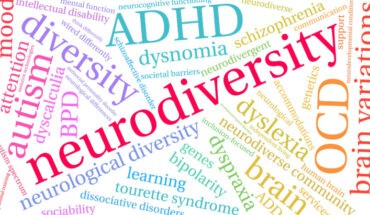Is internet porn the new norm for young people in a digital age? And what effect is it having on their relationships?
Earlier this year, Theresa May’s government announced its plan to radically overhaul sex education by introducing compulsory sexual education, from the age of 4, in all schools, to teach children about healthy relationships.
“By the age of thirteen 83% of young people have seen porn online,” explains Jeni Weiner, from the Jewish youth charity Streetwise. There is nothing new about porn. Thousands of years ago, cavemen drew erotic images on their stone walls, and the ancient Greeks painted them on their vases. Until recently viewing porn used to involve a bit of risk – for hundreds of years it existed on the top shelf of newsagents. This all changed with the invention of smartphones around ten years ago. Now porn is easily accessible 24 hours a day on a device that fits into your pocket.
This all changed with the invention of smartphones around ten years ago. Now porn is easily accessible 24 hours a day on a device that fits into your pocket.
Because porn has been normalised by the internet many children mistakenly think this is how people ought to behave.
Although the digital world has undergone fast-paced change, today’s teenagers still face many of the same issues as confronted their parents’ and grand-parents – relationships, looks, pregnancy, exams and career. “But back in the 1970s we didn’t have to deal with sexting – the exchange of sexual messages and images, which can lead to loss of control over intimate images, bullying or blackmail and such easy availability to porn – with little warning as to whether the content is extreme, violent or misogynistic.
Like most things social media has two sides: it encourages teenagers to socialise with their friends, network and access educational information. But it also has a dark side. Young people are revealing ever more information about themselves and their friends online, which can remain visible for years.
Sam Brunner, a youth-coordinator for the Jewish youth charity Alyth runs sessions for teenagers which explore the dangers of social media and bullying to create a safe space – so that when youngsters feel bullied, overwhelmed they have a haven they can go and be with people they can trust. Technology means that bullying is no longer limited to the playground and can occur anywhere, even in the bedroom, via social media, email and texts as most young people carry smart phones.
Technology means that bullying is no longer limited to the playground and can occur anywhere, even in the bedroom, via social media, email and texts as most young people carry smart phones.
Teenage relationship break-ups become more intensive, as ex-partners are always present online. This type of bullying can leave individuals feeling embarrassed, humiliated, with low esteem and depressed. Jewish youth charities aim to provide support with problems parents may not feel adequately equipped to deal with.
Parents are letting young children play on devices which have been devised for adults, with adult features. Our children are the first generation to grow up with digitalised technology and are far better at using it than their parents and teachers. It’s important to talk to children about encountering inappropriate content online as they often view things without understanding.” To protect younger children from viewing inappropriate content, home computers are best kept in communal areas of the home where parents can see the screen. Parents should note names and passwords and keep an eye on their children’s online profiles and googling history. Some degree of interest is normal: I am sure many of us remember furtively looking up ‘naughty’ words in dictionaries when we were children a generation ago.
As a society we are down-playing the effect porn is having on young men. “Boys are more likely than girls to encounter porn – both deliberately and accidentally. Both sexes feel under pressure not to show vulnerability and to look a certain way.
Working together, our educators, parents and young people themselves need to openly address the social issues that exist.
- Dance yourself well - 23rd June 2024
- Tipped to win Gold at The Chelsea Flower Show 2024 - 21st May 2024
- Jason and the Adventure of 254 - 5th May 2024






